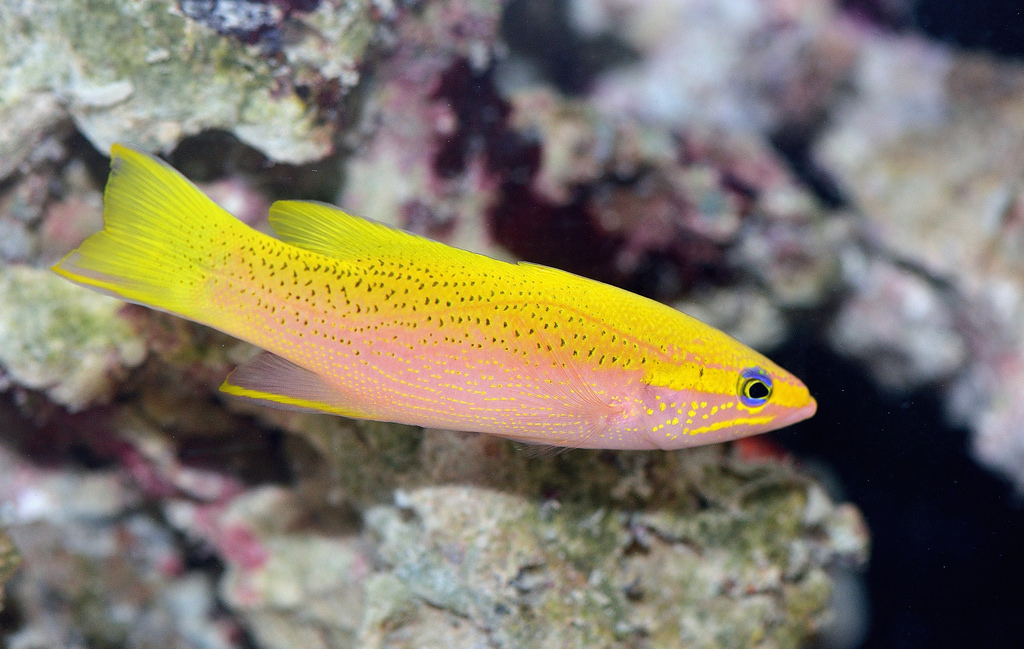We’re at the penultimate last leg of our recent Japanese tour recount, and if you’re just following, be sure to check out the previous parts here, here, here, here and here. We’ve toured Osaka and the surrounding Kansai region extensively before, visiting our favourite reefers like Dr. Shimokobe and Yuma Yasuda, but we’ve never really been outside of this region per se. Not this time. We’re adding Okayama to our travel repertoire, and Mr. Ryohei Genda to our list of reefers to watch!

Professionally, Mr. Genda teaches in the Okayama University of Science as an aquaculture advisor, but in his free time, he owns a collection of reef fish unparalleled and unlike any other. Mr. Genda lives in Okayama, in a quiet, scenic hillside house quite contradicting to the technological buzz that surrounds the cities of Japan. It’s about a day’s drive from Osaka, but the rewards are well worth the time.

Mr. Genda has three display tanks, two of which are deepwater style set ups housing mainly basslets, and another coral tank with more conventional reef associated fish species. His love for basslets, especially those of the genus Liopropoma, has earned him the moniker “Liopropoma boss”. Like “Prognathodes mania” a.k.a Mr. Makoto Matsuoka, the Japanese are whimsical and comical in their unique brand of secret street naming.

Liopropoma is a diverse genus of bass that range in sizes from two inches to nearly ten, or more. Although found in a wide variety of depth ranges, the genus is generally restricted to deeper waters, with many species found only exclusively at depth. His special area of interest are Liopropoma species in the latifasciatum complex. This species complex is one of the more challenging and intractable groups, with numerous similar looking species, many of which are undoubtedly still new to science.

The species is generally yellow with a black equatorial belt that slices longitudinally across the fish (hence the term latifasciatum), but is capable of turning this stripe on and off depending on the mood. This, along with a whole spectrum of intermediates, each with minor differences in color, presents a complicated scenario in terms of their taxonomy. Whether or not each phenotype represents a cryptic species remains unknown.


His collection also plays host to other basslets such as Tosanoides, Odontanthias and Pseudanthias. T. flavofasciatus, O. fuscipinnis, O. katayamai, O. borbonius and P. mica to be precise. Many of these have been blogged about before, so a quick search in the ReefBuilders database would yield more detailed information.


His reef aquarium is particularly beautiful, with a plethora of elegantly aquascaped corals. Being a fish blogger, i’m sorry to disappoint that that won’t be touched upon in too much detail. What’s really interesting here, however, is his pair of Centropyge multicolor angels. This species is notoriously well known for darkening under intense lighting, and in these specimens, this phenomena is pretty well defined. The unique darkening of C. multicolor in captivity draws resemblance to its much rarer, Johnston Atoll endemic sister, C. nahackyi. In a sense, this can be seen as a “poor man’s nahackyi“, seeing as the latter is nearly impossible to obtain in the trade.



The angels are joined by a stunning Cirrhilabrus roseafascia, and a pair of very special Plectranthias that I hold dearly to my heart. This diminutive fish is currently undescribed, but it has been awarded a tentative name for its imminent description. Plectranthias “ubiquitous” is so named for its wide geographical range and apparent ubiquity in the appropriate habitat. This fish is, despite its ironic name, is extremely rare in the trade, and very rarely, often incognito, slips into the aquarium market.

Of course, in typical Lemon fashion, i’ve saved the best for last. And in the last blog post of this short series, we’ll look at some incredibly rare fish that are just right up there in the pantheon of aquarium reef keeping. Japan is just way up there in the echelon of exotic fish, and it’s getting increasingly difficult to top each visit to this wonderful country.
P.S, Thank you Mr. Genda for your incredible hospitality! I enjoyed every minute looking at your wonderful fish.



